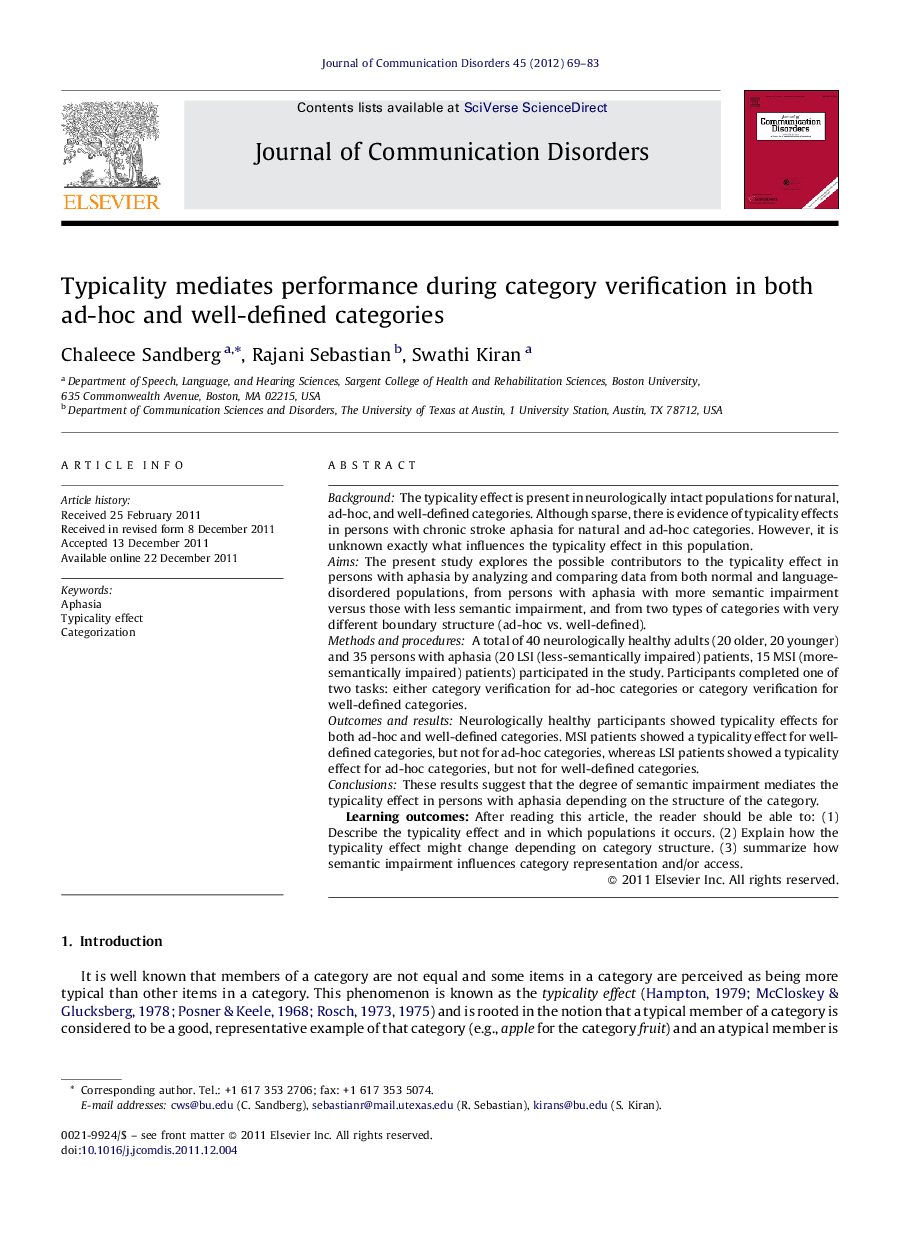| Article ID | Journal | Published Year | Pages | File Type |
|---|---|---|---|---|
| 910870 | Journal of Communication Disorders | 2012 | 15 Pages |
BackgroundThe typicality effect is present in neurologically intact populations for natural, ad-hoc, and well-defined categories. Although sparse, there is evidence of typicality effects in persons with chronic stroke aphasia for natural and ad-hoc categories. However, it is unknown exactly what influences the typicality effect in this population.AimsThe present study explores the possible contributors to the typicality effect in persons with aphasia by analyzing and comparing data from both normal and language-disordered populations, from persons with aphasia with more semantic impairment versus those with less semantic impairment, and from two types of categories with very different boundary structure (ad-hoc vs. well-defined).Methods and proceduresA total of 40 neurologically healthy adults (20 older, 20 younger) and 35 persons with aphasia (20 LSI (less-semantically impaired) patients, 15 MSI (more-semantically impaired) patients) participated in the study. Participants completed one of two tasks: either category verification for ad-hoc categories or category verification for well-defined categories.Outcomes and resultsNeurologically healthy participants showed typicality effects for both ad-hoc and well-defined categories. MSI patients showed a typicality effect for well-defined categories, but not for ad-hoc categories, whereas LSI patients showed a typicality effect for ad-hoc categories, but not for well-defined categories.ConclusionsThese results suggest that the degree of semantic impairment mediates the typicality effect in persons with aphasia depending on the structure of the category.Learning outcomes: After reading this article, the reader should be able to: (1) Describe the typicality effect and in which populations it occurs. (2) Explain how the typicality effect might change depending on category structure. (3) summarize how semantic impairment influences category representation and/or access.
► Healthy adults show typicality effects for both ad-hoc and well-defined categories. ► Persons with aphasia also show typicality effects for these categories. ► Degree of semantic impairment and category type mediate the typicality effect.
